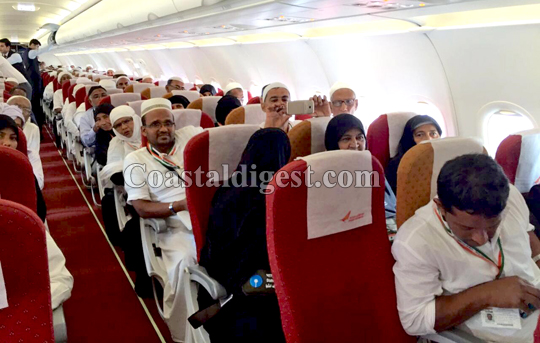Mangaluru, Aug 4: The first flight from the coastal city for Haj season 2016 took off on Thursday morning at the Mangaluru International Airport. The special Haj flights will continue till August 7.

Every day A-320 type Air India flight will take off from the Airport carrying around 150 passengers, who will land in Madinah via Sharjah. There were 152 passengers on board the inaugural flight which took off at 11:05 a.m.
The pilgrims, who had gathered at the old terminal building at Bajpe last evening, boarded the buses arranged by the Haj committee today morning and reached the Airport by 9: 15 a.m.
R Roshan Baig, minister for urban development and Haj, also visited the Airport at 9:30 to send off the pilgrims. MLAs Mohiuddin Bava, JR Lobo, Haj management committee chief Y Mohammed Kunhi, District Wakf Advisory Committee president S M Rasheed Haji were present.
As many as 628 pilgrims from Dakshina Kannada, Udupi, Kodagu, Chikkamagaluru and Hassan districts are boarding Haj flights from Mangaluru this year.
Also Read: Show the world that Islam is peace: Minister tells Mangaluru Haj pilgrims






Comments
Masha Allah Isaq Bhai Ahlan Wa Sahlan
Masha Alla
Al Mighty Allah accept all our good deeds In Sha Allah HAJJ MAKBOOL and MABROOR
Stop Selfie... dont make a selfie camp there. forget dunya and concentrate on your ibaadat...
May ALLAH make your path easy and accept your ibaadat and Hajj.
MAY ALLAH ACCEPT THE GOOD DEEDS FROM ALL HAJIS.
MAY ALLAH BRING ALL PEOPLE WHO WENT FOR HAJJ BACK HOME SAFELY. AAMEEN.
Add new comment